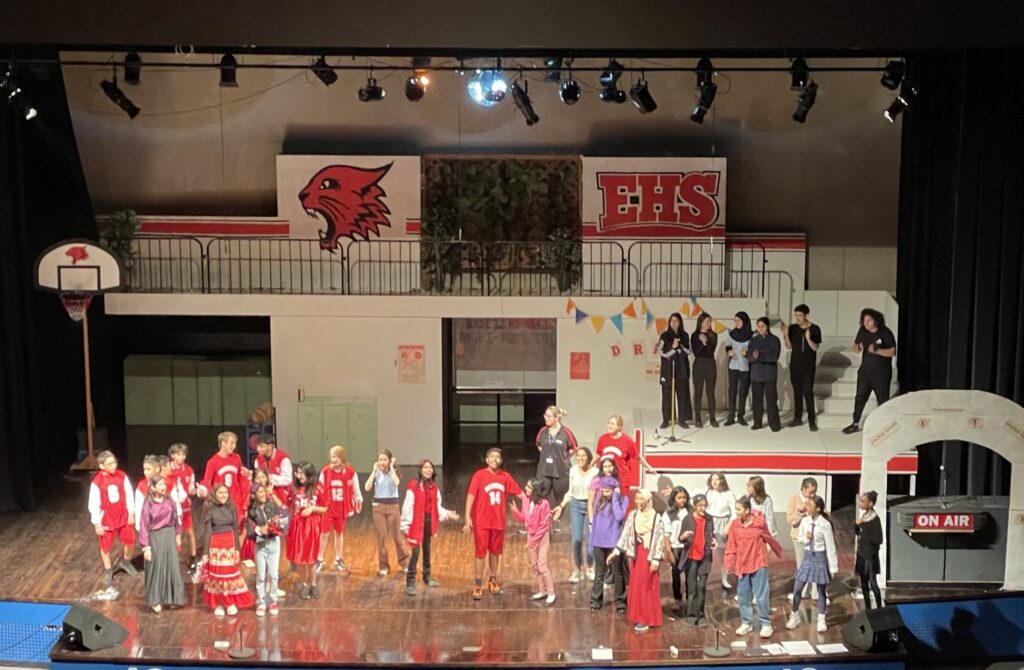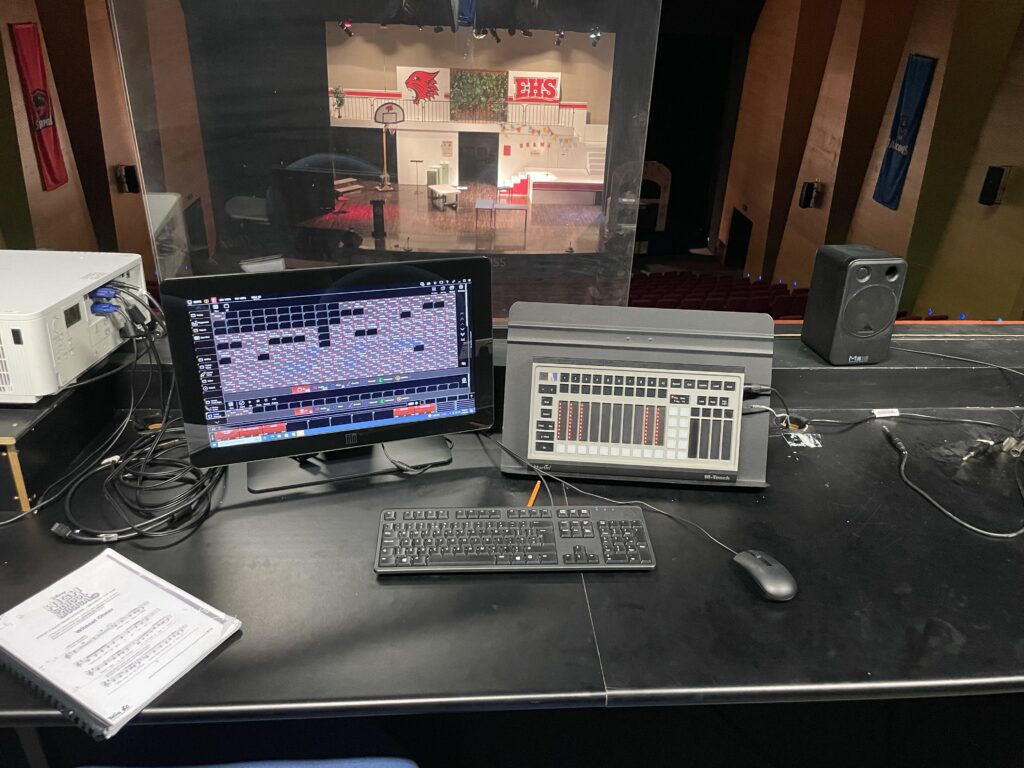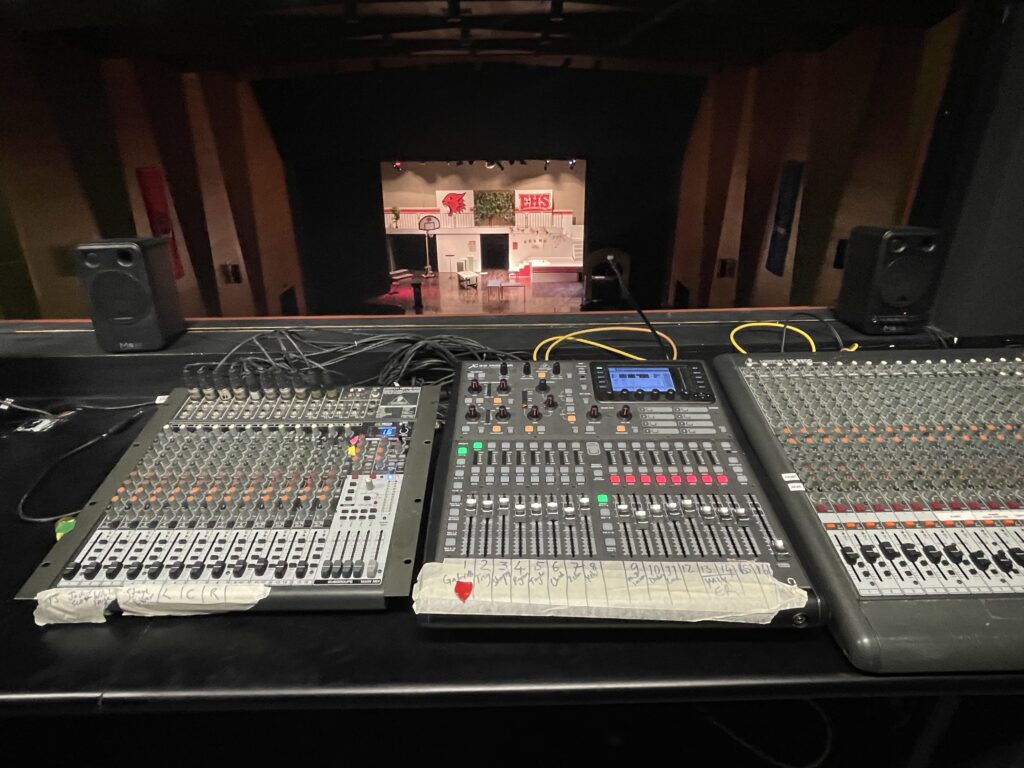One of the richest experiential learning projects that also fits within the STE(A)M and cross-curricular learning frameworks is right under our noses, albeit tucked away in the Performing Arts building. While most teachers are aware of the cross-curricular connections between Theatre and language/literature, there are opportunities for wider breadth of engagement that many don’t consider.
Musical Productions, and theatre productions in general, provide an entire suite of learning experiences that includes Sciences, Technology, Engineering, and Maths; the only difference being that in theatre projects, the perspective is from the side of the Arts, rather than a problem based in the sciences or engineering. I’m a Director of Music and Performing Arts, so I may be biassed, but I’ve long been fascinated with the interconnecting elements of all subjects, and how to use it all to our advantage. So, hear me out!
STEM education, and its more creatively-inclined STE(A)M counterpart has been at the centre of much educational reform for over ten years. And for good reason, STE(A)M is incredibly important; by the year 2031, STE(A)M-related jobs are predicted to grow by 10.8%, and people working these jobs will earn twice as much as their non-STEAM contemporaries.
These careers will be fast paced, constantly changing, reliant on technology and students will need to draw on a wide range of skill sets and work as a team to solve large, global problems. Good educators have long known about the benefits of STE(A)M learning and its ability to prepare our students for these fast changing and interdisciplinary jobs of the future and we have since seen these programs implemented in classrooms across the world.
But even with so much emphasis and hype around these approaches, there still seems to be uncertainty, even amongst experienced teachers, about how to effectively include the Arts to foster creative problem solving. Certainly, a focus on engineering, sciences, and mathematics, has inspired far too many dry spaghetti bridges and robot races.
Even the Aerospace industry giant, Lockheed and Martin, identified the need for more creative application in sciences and designed its own program to drive creativity and innovation through even further expansion of the Arts into STE(A)M studies. It’s no surprise that most of the world’s most ground-breaking scientists have/had a highly active creative side.
How Musical Productions make such great STEAM projects
The most appealing quality of musical theatre productions is not so much the fact that so many different skill sets are involved but rather that no single aspect of a production works in isolation. All skill sets are linked together and all team members must interact with others, view problems from different perspectives, and utilise a wide range of skill sets to bring together a show.
The ideal case study
I recently led my school’s production of Disney’s High School Musical for performances to both the sub schools and the wider community. While there were opportunities for STE(A)M related projects listed in this ideal case study that simply weren’t feasible at the time, the amount of engagement obtained from a wide range of students was impressive.
This is an idealistic rollout of a school production. Understandably, the array of smaller projects within the larger project of the Musical Production will not be feasible for some schools. However, even activating only a few of these projects within a production would provide opportunities for real-life experiences that focus on creative problem solving. Best of all, the experience is fun for students and they feel great pride in the final result.
To ease the Science and Engineering teachers into it, I’ll start with set design, the area most resembling traditional steam projects. By the end I’ll have them all singing broadway numbers!
Set Design
The set design team is facilitated by a teacher and arts technician but ultimately, realising the vision and planning of a student cohort. The team needs to consult the director and the student co-directors to discuss the various scenes and the respective blocking (where the actors are and when). It’s also here that the first major STEAM challenge is revealed.
The STEAM project brief: We have a very ambitious set that we’d like to construct, but we don’t have the budget to buy all new materials, most of it will need to be built from existing resources.
After meeting with the direction team, the first step for the team was to conduct comprehensive research into the musical itself, including previous productions, to investigate existing designs for inspiration and feasibility. In this particular musical, the directors wanted a two-level set to resemble a school with ‘native’ areas for the various social groups. A basketball gym for the ‘jocks’, a science lab for the ‘brainiacs’, a miniature auditorium stage for the ‘Thespians’, and a cafeteria where the three groups would mingle.

Using the research to guide their way, they set to designing the set. Plans needed to take into account the load limit required, budget and time constraints, and showcase the aesthetic agreed upon by the production team.
Students used mathematics skills to measure their constructions on stage, conceptualising it in three dimensions. Engineering and design process skills were activated to draw up plans and conduct basic safety testing.
In this rather large and ambitious set, the second level would have to accommodate the weight of at least four students, and ideally have multiple archways underneath, through which actors may enter as if high school ‘hallways’. After testing, the original three ‘hallways’ requested in the brief had to be scrapped as there was no way to feasibly make it safe within the budget. The remaining two ‘hallway’ arches passed with flying colours and the build could proceed.
Having resource and budget restraints meant the team had to think innovatively when it came to realising the structure. Students innovated by using the temporary stages for school events as frames and movable pin boards on wheels where modified to be modular double sided set backdrop.
As if working to fulfil structural and practical requirements can be hard enough, the team also worked dynamically with the lighting team to ensure design elements and paint colours would fit the brief. Testing, a major part of the STE(A)M process, had to be done with paint colours, as lighting would change their hue depending on the scene.
Lighting Technical Team
Setting up and programming a lighting system for a show is a STEAM project in itself, utilising digital technology, technical interfaces, and collaborative problem solving. The extent to which digital technology is used obviously depends upon the resources of the school, but limited resources will only demand more innovative solutions.
The STEAM Project Brief: We need to create suitable lighting situations for 18 different scenes using the existing lighting array and software, all while taking on board feedback from the directors and set design team.
In most international schools, there will be a basic lighting rig and controlling interface, whether it be an analogue desk or digital program. In our case study, the school has a substantial lighting rig, albeit a little outdated, which is linked to an electrical switchboard controlled by software. In the lighting team, students need to meet with directors and set designers to discuss the requirements for each scene.
With a creative outcome in mind, the team needed to first research various lighting effects and the software operation itself. Sending messages down a DMX cable in channels of 512 parameters is a complex maths and technology problem in itself, let alone doing it for 20 or 30 lights. Also, it resembles rudimentary coding.

Following this, they planned a lighting array and set it up, a task that can be technically demanding. Lighting fixtures can be moved around to suit a particular scene but that might not suit the next scene. It’s a constant balancing act. Finally, they need to manipulate the software to create the necessary combinations of lights and effects, and evaluate the outcome in conjunction with the director and set teams.
More than just the director and set teams, our crew in the case study needed to work with sound technicians to negotiate the ideal height for a technical bar that would also need to mount microphones, not just lights.
Sound Technicians
There’s typically a blurred boundary between sound engineers and musicians. Many modern instruments require a basic knowledge of signal flow and to do home recording, one must be well versed in using digital technologies. For that reason, many musicians contributed to the technical team for sound, making their experience interdisciplinary from the start.
To work effectively as a sound tech, a student needs to have a basic understanding of the concepts of physics at play. From the sound source, through its transformation to an electrical signal, journey to a mixing desk, transformation to a digital signal before its re-conversion to electrical and eventually sound energy through speaker systems. More than this scientific understanding of sound, students need to understand signal flow through a complex system of outs and ins, duplicated sound, and auxiliary outputs, just to name a few.
The STEAM Project Brief: In our ideal case study, the band plays concurrently alongside the action on stage. We need balance in sound for the audience and comprehensive communications and sound monitoring for the musicians and crew.
On stage, actors have their own headset microphones, whose signal will eventually come through the same system. The sound from the instruments needs to be either picked up by microphone, or taken directly from an electronic instrument.
All these sound signals make their way to the mixer in the sound booth. Using a digital interface, students needed to exercise their skills in engineering and digital technologies to create a working wiring/patching array, use the digital interface, and listen and make judgments based on aesthetics to get the highest quality product.
This constant negotiation between a desired aesthetic outcome and the technical challenges to achieve it, sets up some challenging STEAM problem solving. A major learning experience took place when several of the actors’ microphones had a lot of interference. After testing, the team found that: a) certain radio frequency channels were ‘cleaner’ than others, and b) they had to find the right level of ‘squelch’ to balance between picking up enough signal, and receiving low level interference.

Another occurred with our main speaker system. Because of our large, 500-seat theatre, the audience seated towards the back would first hear the audio from our rear house speakers then, a fraction of a second later, hear the audio from the main speakers (on stage). This latency is disorientating for listeners. To solve this problem, students had to calculate the difference in time using the speed of sound (343m/s) and incorporate it into a delay unit in the signal chain. Real world application of physics problems.
Overall, these various projects brought out the technical side of our arts-inclined performers, and the performing arts side of our technical team. These are reassuring signs that the polymath approach is alive and well in our students, a philosophy of lifelong learning I try to instill in them.
Other Interdisciplinary Opportunities
Language/Literature
Theatre and languages/literature has always had strong links; I think the English teachers among us have chewed through their fair share of Shakesphere with sceptical students. Performers and technical teams alike conduct close readings of text without realising it.
Actors and directors use comprehension syntactic analysis skills to embody character relationships, symbolism, and subtext through the language of the dialogue and stage directions. Technical teams also use comprehension to visualise the scenes and stage blocking they need to create.
Vocabulary is also expanded in a meaningful way – even the youngest members of my cast now know, and will never forget, the meaning of ‘status quo’ thanks to the High School Musical number, Stick to the Status Quo.
Most teachers are aware of the links of Music, especially song, to poetry. All have the shared ability to evoke pathos and assign emotions and imagery to the abstractions of music. Teachers can go even further to challenge students, investigating Musical structure in writing.
Business
Going beyond the stage, there are many opportunities for creative business students and aspiring entrepreneurs to exercise their administration, marketing, organisation, and communication skills. What most theatre-goers don’t realise is that there’s an entire task force behind those seen on stage, and unseen backstage.
In our case study, the marketing team, facilitated by a teacher of business, put together a broad marketing plan that included a ‘design a promotional poster’ competition, advertising in school, and on social media. Tickets are designed by students and sold by the team both in pre-sale and through the ticket booth on the night. Adding to this, students get real-life business experience by choosing and buying items that they will eventually sell for profit at the performances.
It takes time, and a village
By this point, it should be clear that there is no limit to the amount of meaningful experiential learning that can be provided through a school musical production – I haven’t even touched upon links with physical education. There are, however, some important caveats to make.
When students take such a leading role in all aspects of the project (as they should), it takes a lot more time. These young learners have big ideas that may not be feasible, they need to try things that maybe don’t work out, and they aren’t as good at managing their time as us teachers are (or should be!).
Moreover, the idealistic case study that I’ve put forward is just that. In my own production, we weren’t able to solve all the STEAM problems put forward, and in many instances teachers had to step in to correct or complete jobs.
The important lesson here is that the students were involved, they had some control, they could see how their skills and teamwork led to solving problems and, most importantly, they could be proud of a spectacular show.

